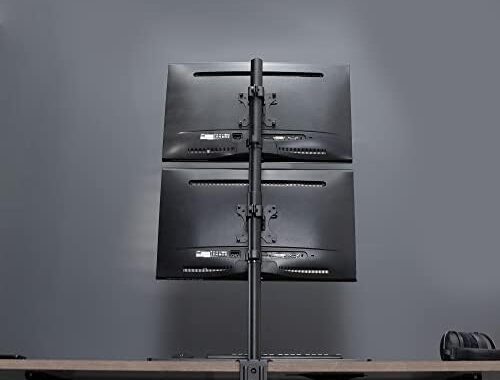Comprehensive Review of the AI-Driven Biometric Attendance System

Introduction
Keeping track of attendance is an integral and essential part of managing a workplace. With conventional methods of attendance recording such as registers and timekeeping clocks becoming obsolete, it’s time to switch to a more modern and advanced system. The AI-driven biometric attendance system is one such innovative technology that has made attendance recording effortless and more efficient in recent times. Let’s have a detailed look at the AI-driven biometric attendance system and understand its features, benefits, and drawbacks in this review.
Features of AI-driven Biometric Attendance System
The AI-driven biometric attendance system uses a combination of artificial intelligence and biometric authentication methods to record attendance. The system comes with various features that make it a top choice for most organizations. Firstly, the system has advanced facial recognition capabilities, enabling it to recognize and authenticate individuals even if they wear face masks or have facial hair. Additionally, the system has a fingerprint scanner that can efficiently record attendance even if an employee’s face is partially covered. Secondly, the system can handle multiple employees at once, making it an excellent option for larger organizations. Thirdly, the AI-driven system can seamlessly integrate with the existing office infrastructure, including security cameras and access control systems. Lastly, the system has easy-to-use software that helps employees check their attendance records and makes it easy for HR teams to manage employee attendance.
Benefits of AI-driven Biometric Attendance System

The AI-driven biometric attendance system offers several benefits, making it a wise investment for organizations. Firstly, the system provides an accurate and tamper-proof record of employee attendance. Traditional attendance recording methods such as registers or manual systems can be manipulated, but the AI-driven system ensures that attendance records are authentic and secure. Secondly, the system eliminates the need for any physical contact between employees and the attendance recording system, making it more hygienic in the current COVID-19 scenario. Thirdly, the system reduces the administrative burden on HR teams, allowing them to focus on other crucial tasks. Additionally, the AI-driven system provides data insights and analysis, which can be used to optimize employee performance and productivity.
Drawbacks of AI-driven Biometric Attendance System
While the AI-driven biometric attendance system offers numerous advantages, it also has a few limitations. Firstly, the system requires a high upfront cost to set up, and the cost of maintenance and repair can add up over time. Secondly, the system requires a stable and reliable power source, which can result in dependency on electricity. Thirdly, the system may face technical glitches or errors, leading to inaccurate attendance records. Lastly, the AI-driven system may raise privacy concerns among employees as their biometric data is being recorded and stored.
User Experience
After using the AI-driven biometric attendance system for a few weeks, we found that it significantly reduced the time and effort required for attendance recording. The facial recognition and fingerprint scanner worked flawlessly, and we never had any issues. The software interface was user-friendly and easy to navigate, and employees could check their attendance records in real-time. However, we did experience a few technical glitches such as the system not recognizing our faces due to low lighting or camera angle issues. Overall, our experience with the AI-driven biometric attendance system was positive.

Value for Money
The AI-driven biometric attendance system may seem expensive initially, but it provides excellent value for money in the long run. Its accuracy, tamper-proof records, and seamless integration with existing office systems provide significant benefits that justify the investment. Additionally, the system’s data insights and analysis can help optimize employee performance, resulting in increased productivity and revenue in the long run.
Conclusion
In conclusion, the AI-driven biometric attendance system is an innovative and advanced technology that offers several benefits to organizations. Its accuracy, tamper-proof records, and easy-to-use interface make it a wise investment for managing employee attendance. However, its high upfront cost, dependency on electricity, technical glitches, and potential privacy concerns must be considered before implementing the system. Overall, the AI-driven biometric attendance system is a game-changer in the field of employee attendance management that promises to revolutionize the way organizations track and manage attendance.


![Amazon.com: SABRENT 4 Port USB 2.0 Hub [90°/180° Degree Rotatable] (HB-UMN4) : Everything Else](https://www.coupondealsone.com/wp-content/uploads/2024/04/WT3CXiYnTVaD.jpg) Sabrent 4-Port Hub with 360 Degree Rotatable Design Review
Sabrent 4-Port Hub with 360 Degree Rotatable Design Review  Professional Review of XYZ Product
Professional Review of XYZ Product  Review of Electronic Organizer with Multiple Compartments and Accessories
Review of Electronic Organizer with Multiple Compartments and Accessories  VIVO Monitor Stand Vertical Stacked Review
VIVO Monitor Stand Vertical Stacked Review  Professional Review of Product X
Professional Review of Product X  Elevate Your Baking with the Stylish and Powerful Drew Barrymore 5.3-Quart Stand Mixer
Elevate Your Baking with the Stylish and Powerful Drew Barrymore 5.3-Quart Stand Mixer  Review of the Sterilizer Charging Wireless Certified Sanitizer
Review of the Sterilizer Charging Wireless Certified Sanitizer  DESTEK VR Controller Review
DESTEK VR Controller Review  Translate English to Albanian Review
Translate English to Albanian Review